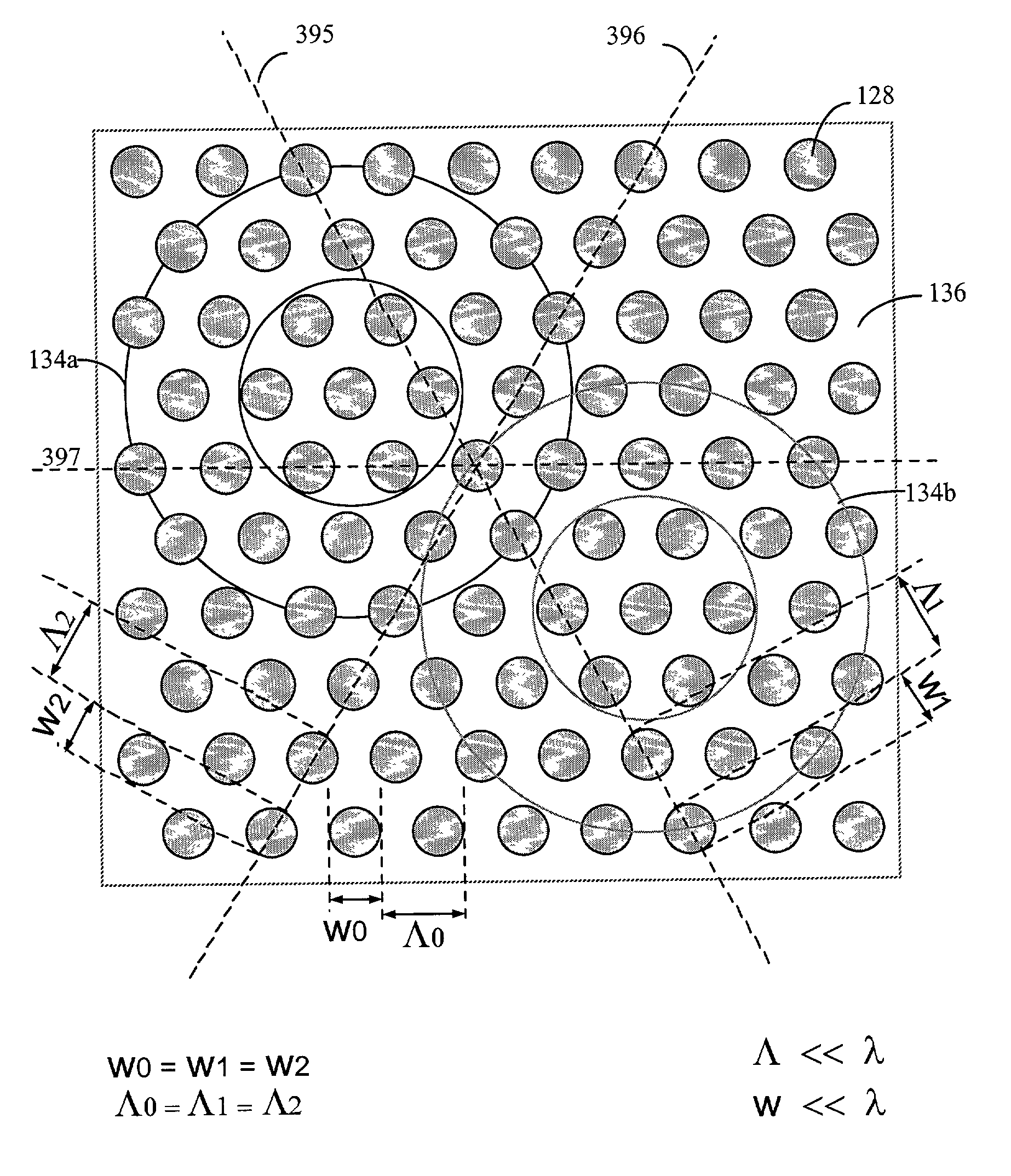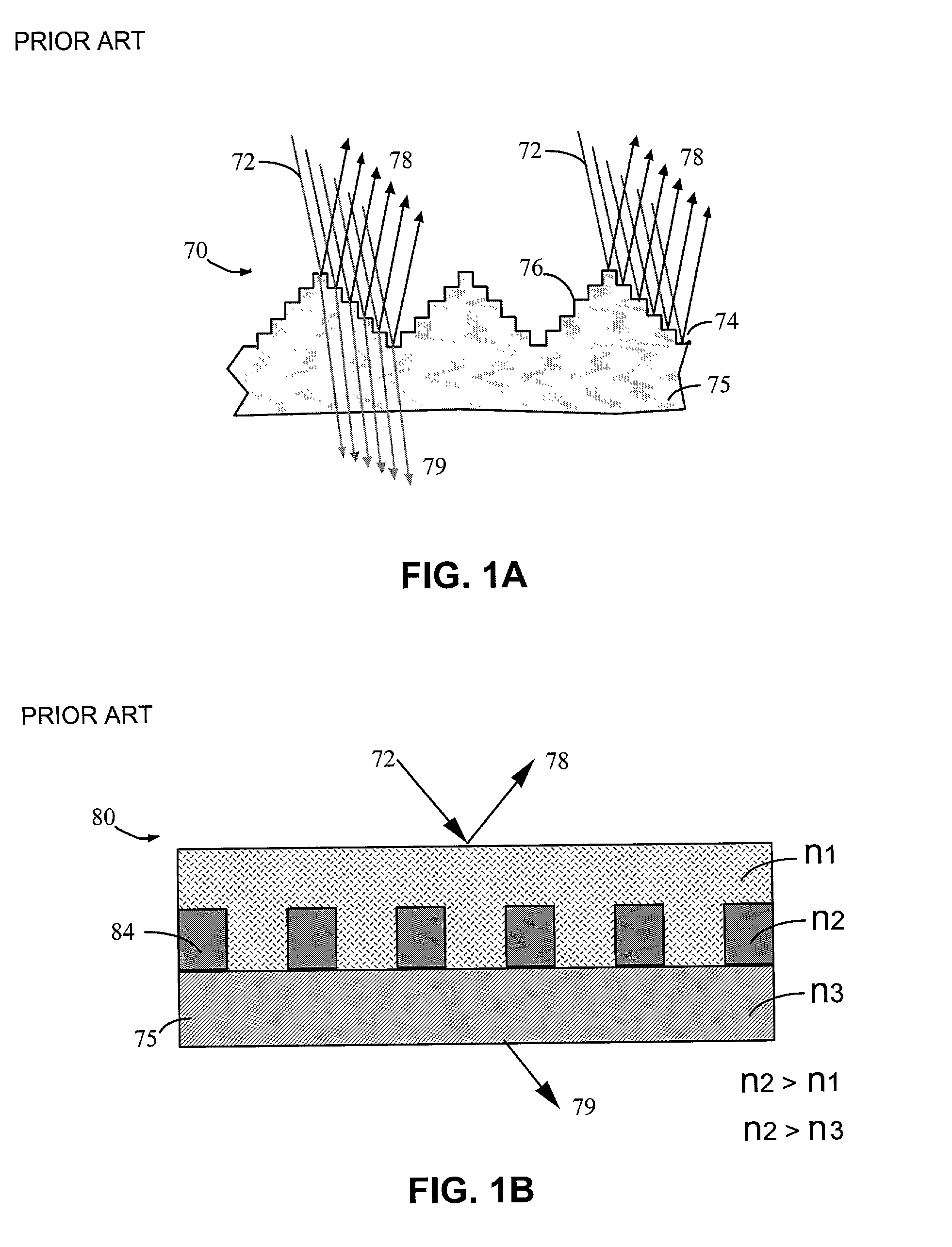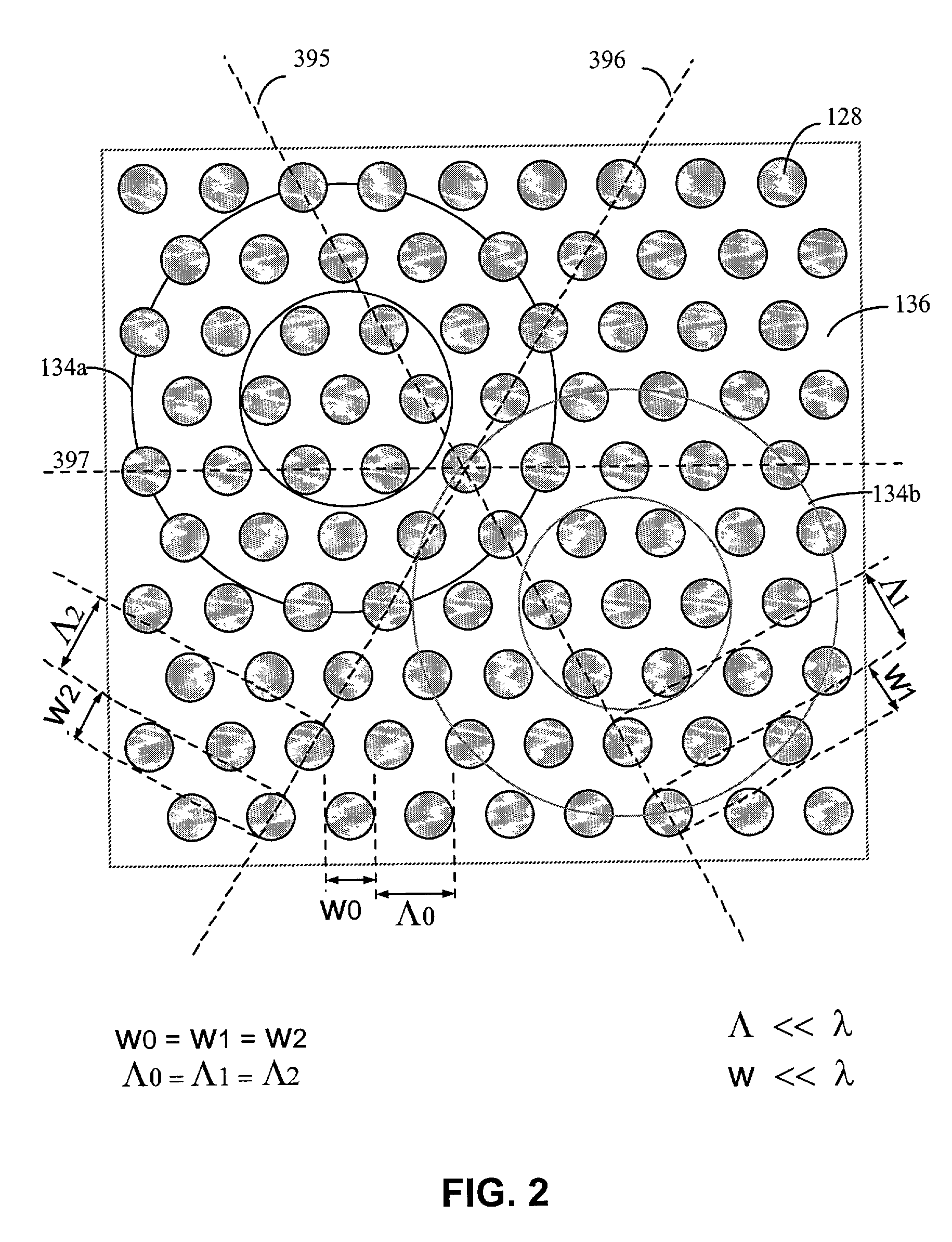Optical wavelength resonant device for chemical sensing
a technology of optical wavelength resonant and chemical sensing, which is applied in the field of biological or chemical sensors, can solve the problems of limited fluorescence-based biosensors, inapplicability of fluorescent compounds to all materials, and no method has been developed, and achieves the effects of low loss, efficient filtering, and high degree of circular symmetry
- Summary
- Abstract
- Description
- Claims
- Application Information
AI Technical Summary
Benefits of technology
Problems solved by technology
Method used
Image
Examples
Embodiment Construction
[0035] A description of preferred embodiments of the invention follows.
[0036] Prior art surface structure filters suitable for use as chemical sensors operate on free space optical beams, and their function can be described by a combination of prevailing theories as depicted in FIGS. 1A-1B. In FIG. 1A an Aztec Surface Structure Resonance 70 is shown where an incident optical beam containing a broad range of wavelengths 72, is partially reflected 74 from phase transitions or steps 76 comprising a structure on the surface of a substrate 75, each reflection adding coherently for only a narrow range of light wavelengths in a reflected beam 78, and having no affect on other wavelengths passed in a transmitted beam 79; in FIG. 1B a guided mode surface structure resonance device 80 is shown where a filtered reflected beam 78 is created only for a light wavelength matching the transverse variation of density 84 imposed by the surface structure shape and composition.
[0037] As shown in the pr...
PUM
| Property | Measurement | Unit |
|---|---|---|
| wavelengths | aaaaa | aaaaa |
| wavelengths | aaaaa | aaaaa |
| height | aaaaa | aaaaa |
Abstract
Description
Claims
Application Information
 Login to View More
Login to View More - R&D
- Intellectual Property
- Life Sciences
- Materials
- Tech Scout
- Unparalleled Data Quality
- Higher Quality Content
- 60% Fewer Hallucinations
Browse by: Latest US Patents, China's latest patents, Technical Efficacy Thesaurus, Application Domain, Technology Topic, Popular Technical Reports.
© 2025 PatSnap. All rights reserved.Legal|Privacy policy|Modern Slavery Act Transparency Statement|Sitemap|About US| Contact US: help@patsnap.com



